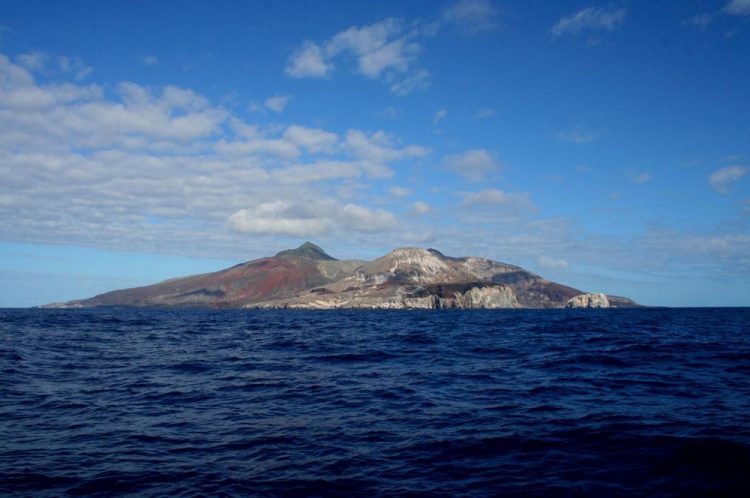UM researcher embarks on field campaign to study effects of smoke on Earth's climate

Ascension Island, located midway between Africa and Brazil will be the base of operation. A British territory, the island supports British and American air forces, communications, space agencies, and global positioning systems. Credit: Google Images
A scientist at the University of Miami (UM) Rosenstiel School of Marine and Atmospheric Science is leading an upcoming international research campaign to study a significant contributor to regional climate warming – smoke. The first-of-its-kind research experiment begins on June 1, 2016 from Ascension Island in the southeastern Atlantic Ocean. The experiment, called LASIC (Layered Atlantic Smoke Interactions with Clouds), is part of a broader international scientific collaboration led by the Atmospheric Radiation Measurement (ARM) Climate Research Facility deployment. The broad collaboration is detailed in a new article in the July Bulletin of the American Meteorological Society.
Southern Africa is the world's largest emitter of smoke particles in the atmosphere, known as biomass-burning aerosols, from the burning of grasslands and other biomass. The project will help researchers better understand the effects of widespread biomass burning on Earth's climate.
The study will investigate how smoke particles flowing far offshore from the African continent affect the remote and cloudy southeast Atlantic climate. Smoke, which absorbs sunlight, is a warming agent in the climate system when located above a bright surface, such as clouds. The smoke overlying the southeast Atlantic provides one of the largest aerosol-based warming of climate on the planet, since the region is also home to one of the largest low-cloud decks on the planet.
“Ascension Island is an ideal location since it is very remote and allows us to sample the smoke after it is well-aged, about which less is known,” said Paquita Zuidema, professor of atmospheric sciences at the UM Rosenstiel School and principal investigator of the research experiment. The long deployment time will allow us to characterize the marine low clouds both with and without the presence of smoke. This is ultimately valuable for understanding the Earth's energy balance.”
By evaluating how the low clouds respond to the presence of sunlight-absorbing aerosols, scientists can better understand low cloud behavior, which is currently an uncertainty in model predictions of future climate, since no fundamental theory on low cloud processes is yet in place.
Low clouds dominate the atmosphere over the southeast Atlantic Ocean all year. Bright white cloud appears darker when viewed from above when smoke is present. The southeast Atlantic overall is brighter, not darker when smoke is present, suggesting that the clouds become thicker and more extensive when smoke is present.
Zuidema received a $365,050 seed grant from the U.S. Department of Energy to plan the study. And a $440,225 grant from NASA which further supports related aircraft investigations as part of the NASA Earth Venture Suborbital-2 ORACLES project.
NASA will complement the DOE surface-based measurements with airborne experiments during a month of each year in 2016-2018. This will allow researchers to take airborne samples of smoke particles as it ages, information that will improve satellite retrievals of this mixed smoke-cloud regime. The United Kingdom will also participate with its research aircraft, and French, Namibian, and South African scientists will collect and interpret aircraft and ground-based measurements closer to the Namibian coast.
The UM Rosenstiel School-led research team will study how smoke is transported through the atmosphere and across the Atlantic, how the aerosols change when transported, and the response of the low-lying clouds to the smoke. The information from the experiments will ultimately be used to improve global aerosol models and climate change forecasts.
###
About the University of Miami's Rosenstiel School
The University of Miami is one of the largest private research institutions in the southeastern United States. The University's mission is to provide quality education, attract and retain outstanding students, support the faculty and their research, and build an endowment for University initiatives. Founded in the 1940's, the Rosenstiel School of Marine & Atmospheric Science has grown into one of the world's premier marine and atmospheric research institutions. Offering dynamic interdisciplinary academics, the Rosenstiel School is dedicated to helping communities to better understand the planet, participating in the establishment of environmental policies, and aiding in the improvement of society and quality of life. For more information, visit: http://www.
Media Contact
All latest news from the category: Earth Sciences
Earth Sciences (also referred to as Geosciences), which deals with basic issues surrounding our planet, plays a vital role in the area of energy and raw materials supply.
Earth Sciences comprises subjects such as geology, geography, geological informatics, paleontology, mineralogy, petrography, crystallography, geophysics, geodesy, glaciology, cartography, photogrammetry, meteorology and seismology, early-warning systems, earthquake research and polar research.
Newest articles

NASA: Mystery of life’s handedness deepens
The mystery of why life uses molecules with specific orientations has deepened with a NASA-funded discovery that RNA — a key molecule thought to have potentially held the instructions for…

What are the effects of historic lithium mining on water quality?
Study reveals low levels of common contaminants but high levels of other elements in waters associated with an abandoned lithium mine. Lithium ore and mining waste from a historic lithium…

Quantum-inspired design boosts efficiency of heat-to-electricity conversion
Rice engineers take unconventional route to improving thermophotovoltaic systems. Researchers at Rice University have found a new way to improve a key element of thermophotovoltaic (TPV) systems, which convert heat…



